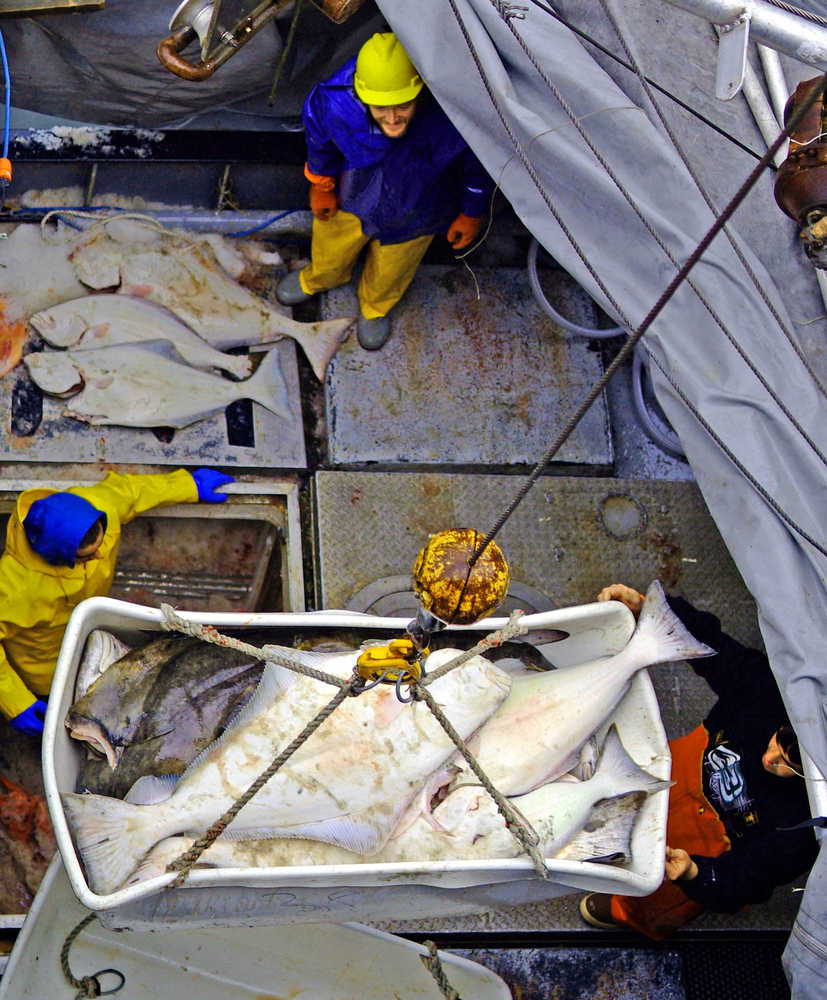The International Pacific Halibut Commission raised halibut quota for the second time in as many years, adding a glimmer of hope to a fishery troubled by stock declines and political squabbles. In Southeast Alaska, that means about 300,000 extra pounds.
The commission, comprised of U.S. and Canadian commissioners, oversees the quota-setting process for U.S. and Canadian halibut fisheries in the Pacific from Northern California to the Bering Sea.
The commission divides the overall halibut fishery into specific areas and allocates quota to each area. In total, the commission set the overall halibut harvest for the 2016 season at 29.89 million pounds, a 2.3 percent increase from 2015.
This is also an increase from the catch limits recommended at the commission’s 2015 meeting, called the “blue line” limits. The 2016 limit exceeds the blue line by more than 3 million pounds.
Each area either received an increase in quota or an equal amount to the 2015 season, except Area 3A, the Central Gulf of Alaska. Each area’s 2016 harvest exceeds the blue line harvest limit.
The Central Bering Sea, or Area 4CDE, has been the focal point for a good deal of commission discussions in 2014 and 2015. Halibut fishermen in the area have been faced with shrinking allocations, leading to several large-scale management decisions from the North Pacific Fishery Management Council.
Officials, including the Secretary of Commerce, implored the commission to set quota at a bare minimum of 1.285 million pounds for the area, which it did in 2015. This year the area’s quota rose.
The commission also adopted management plans for the halibut charter fishery made by the North Pacific Fishery Management Council in 2015.
For Area 3A, the commission adopted a two fish daily bag limit, with a maximum size limit on the second fish of 28 inches. Four fish is the annual bag limit.
Vessels are limited to one trip per calendar day, and each permit is allowed one trip per vessel per calendar day. The fishery will be closed on Wednesdays.
• DJ Summers is a reporter for the Alaska Journal of Commerce. He can be reached at daniel.summers@alaskajournal.com
2016 harvest quota by area:
• Area 2A, Pacific Northwest coast: 1.14 million pounds, 200,000-pound increase from 2015.
• Area 2B, British Columbia: 7.3 million pounds, a 240,000-pound increase from 2015.
• Area 2C, Southeast Alaska: 4.95 million pounds, a 300,000-pound increase from 2015.
• Area 3A, Central Gulf of Alaska: 9.6 million pounds, a 500,000-pound decrease from 2015.
• Area 3B, Western Gulf of Alaska: 2.71 million pounds, a 60,000-pound increase from 2015.
• Area 4A, Central Aleutian Islands: 1.39 million pounds, the same as 2015.
• Area 4B, Western Aleutian Islands: 1.14 million pounds, the same as 2015.
• Area 4CDE: Central Bering Sea: 1.66 million, a 375,000-pound increase from 2015.
• Area 4C: 733,600 pounds, up from 559,000 in 2015.
• Area 4D: 733,600 pounds, up from 559,000 in 2015.
• Area 4E: 192,800 pounds, up from 92,000 pounds in 2015.

